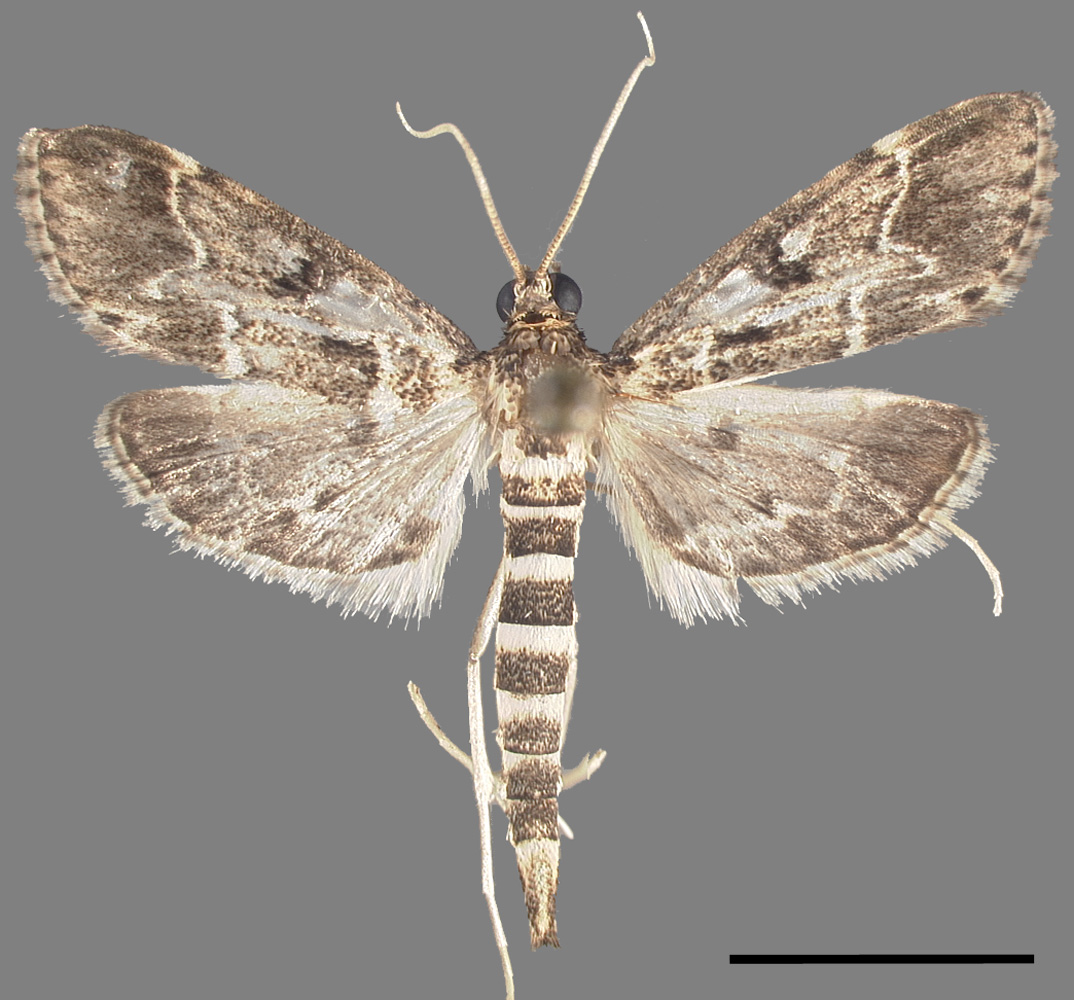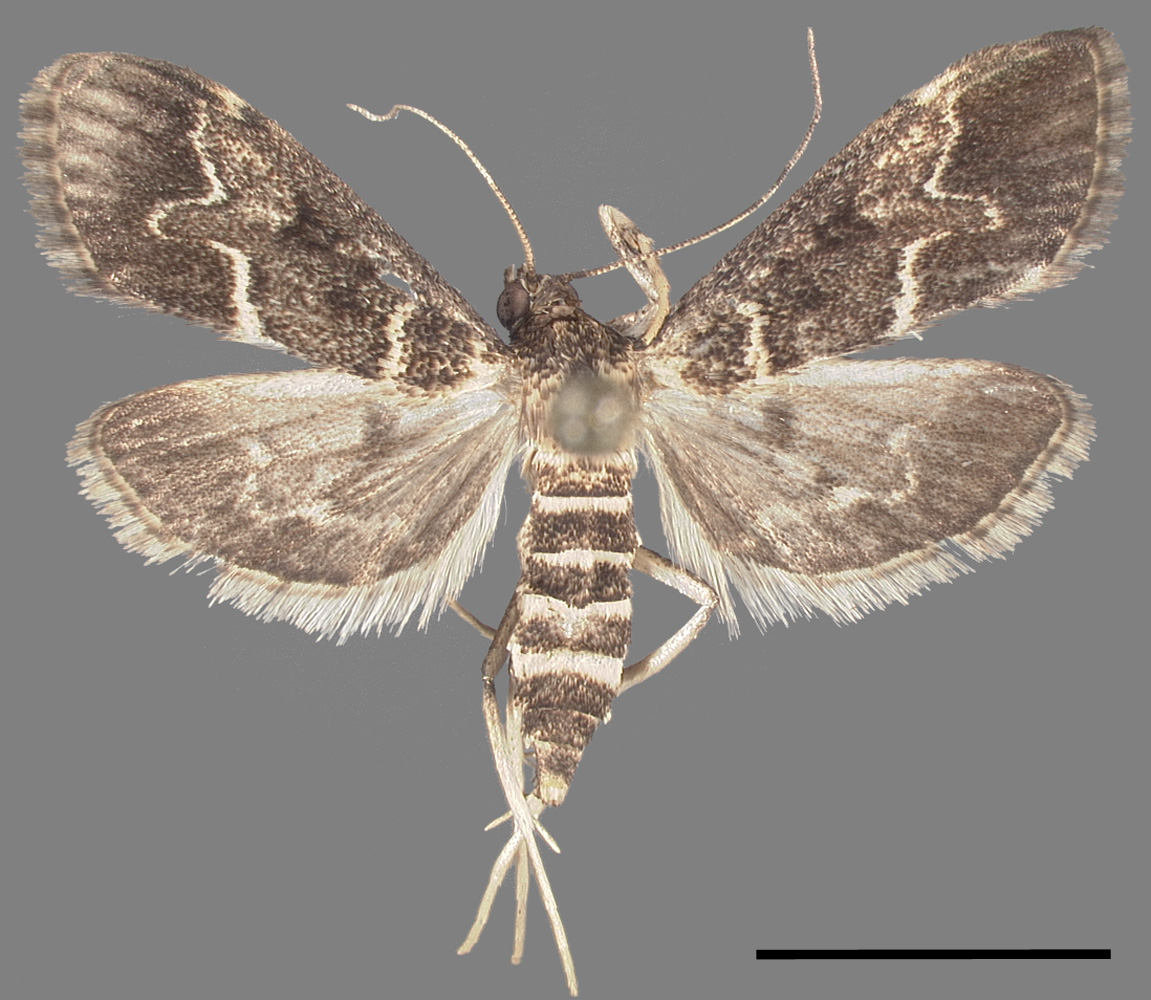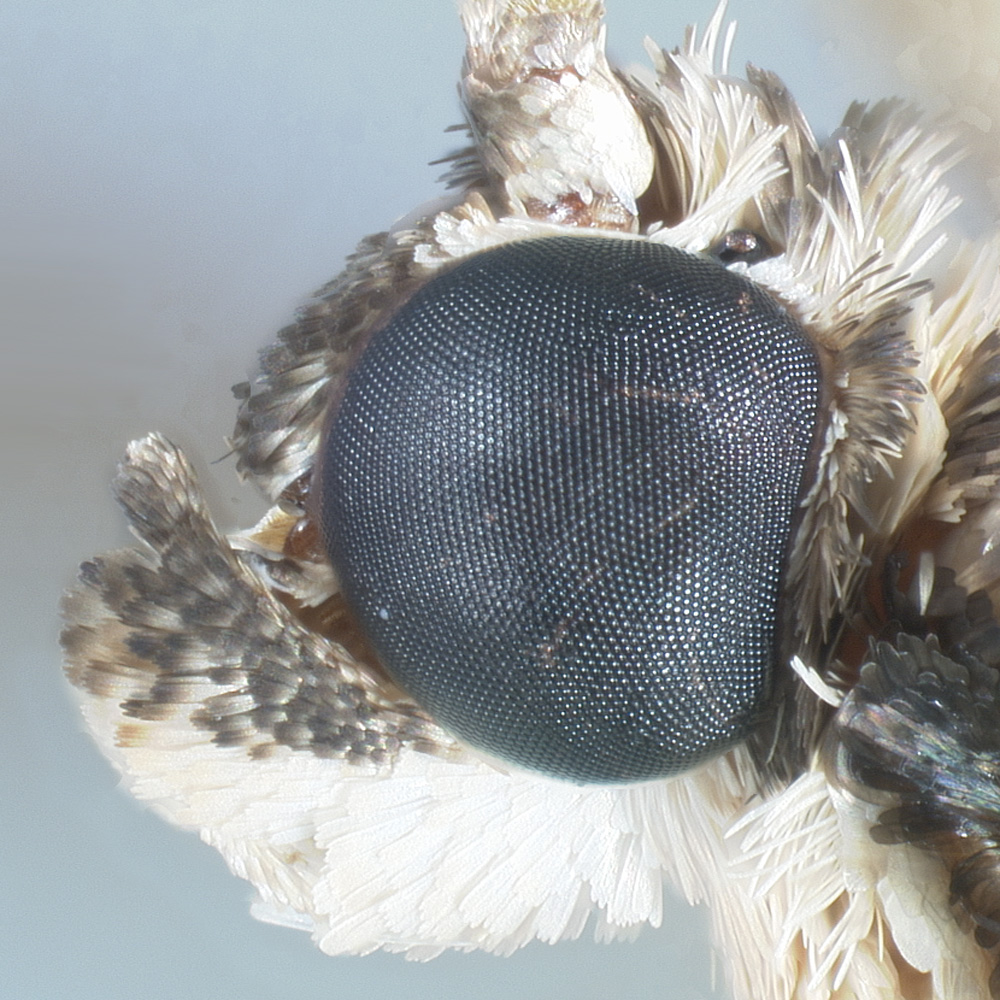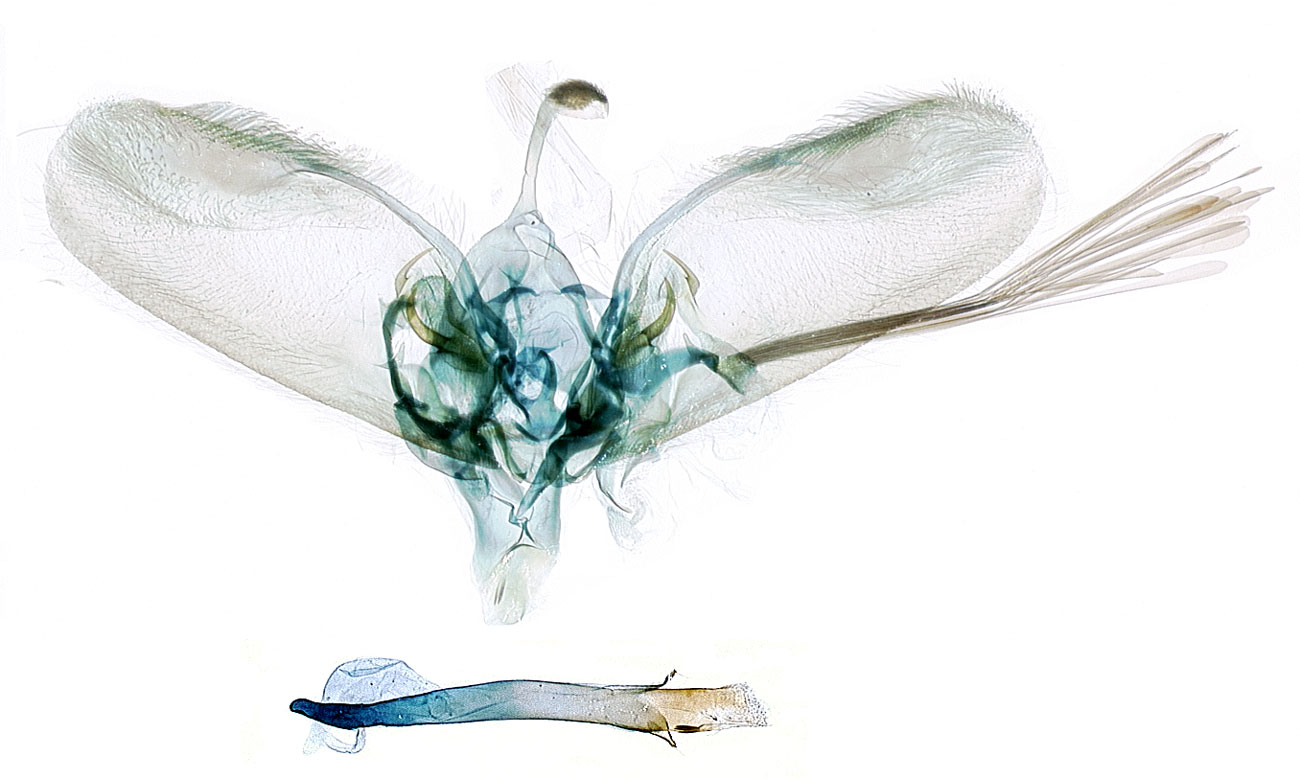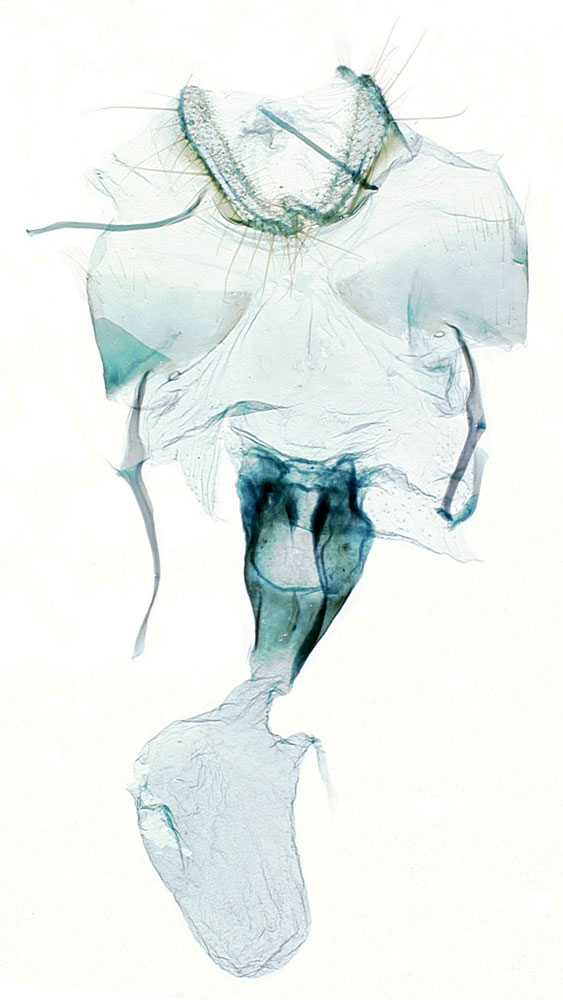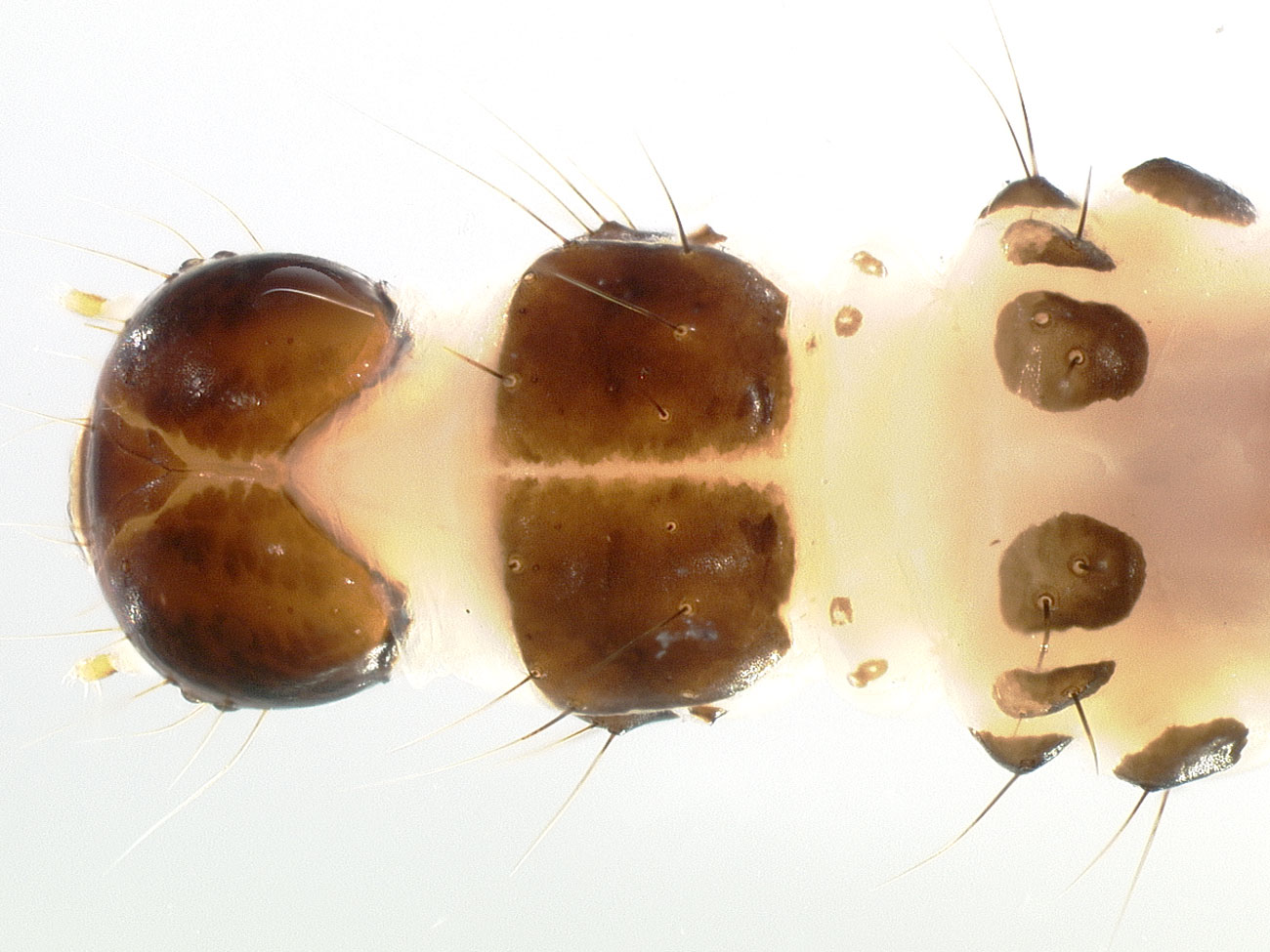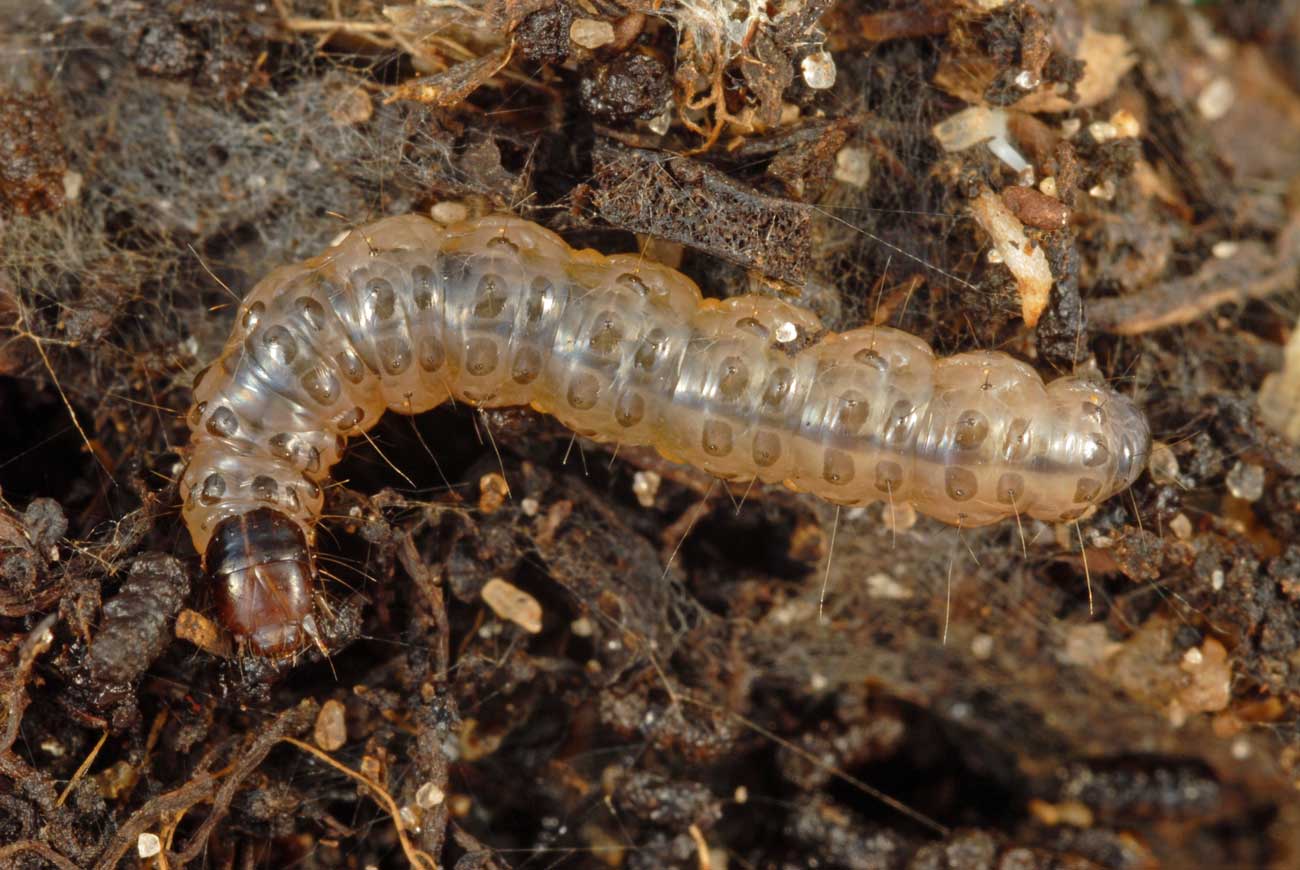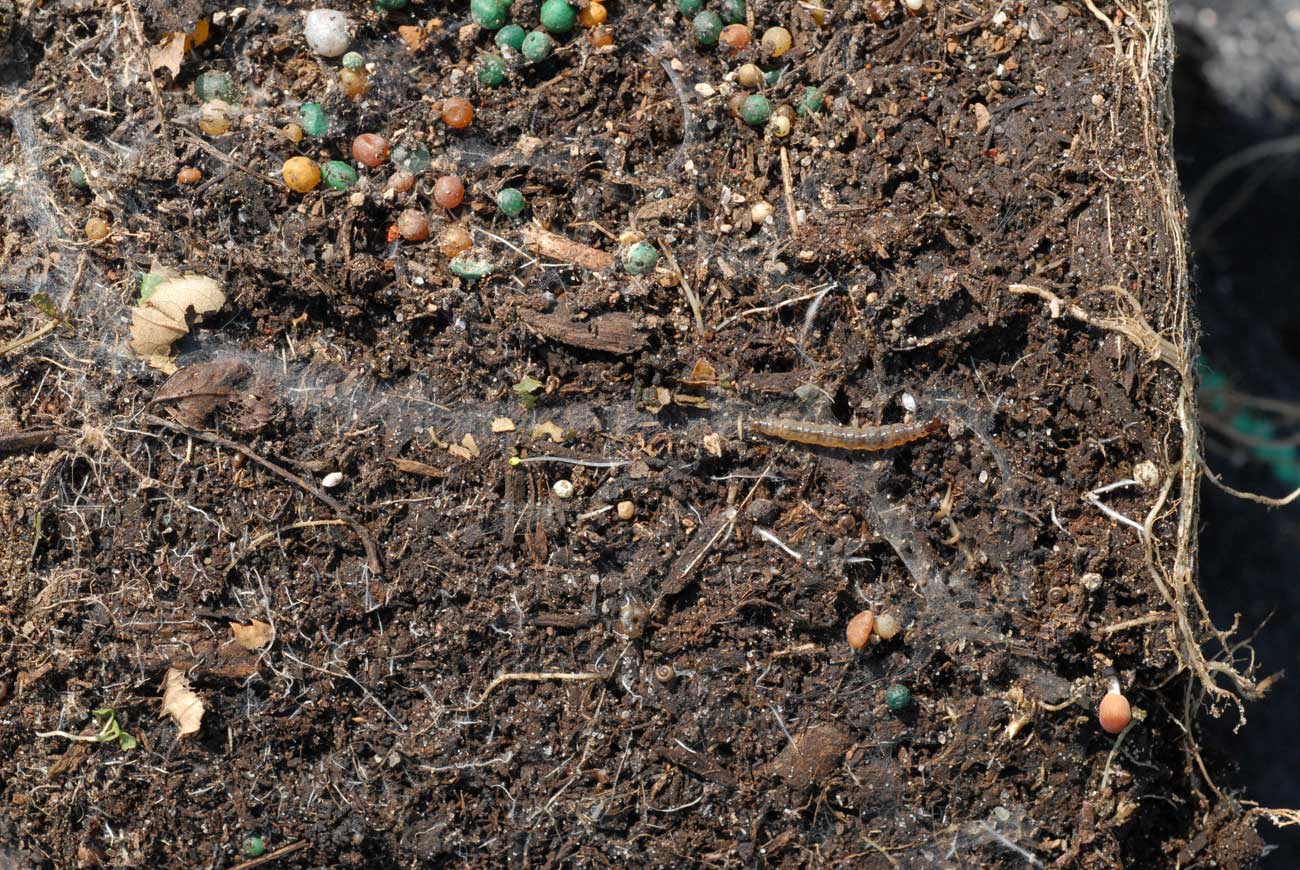Duponchelia fovealis
|
Duponchelia fovealis male. Scale = 5 mm. |
|
Duponchelia fovealis female. Scale = 5 mm. |
|
Duponchelia fovealis head. |
|
Duponchelia fovealis male genitalia. |
|
Duponchelia fovealis female genitalia. |
|
Duponchelia fovealis larva. |
|
Duponchelia fovealis, larval head and first two thoracic segments. |
|
Larva of Duponchelia fovelais in potting medium. Photo © Lyle Buss, University of Florida, Entomology and Nematology Department |
|
Duponchelia fovealis larva on potting medium. Photo © Lyle Buss, University of Florida, Entomology and Nematology Department |
Name
Duponchelia fovealis Zeller, 1847
Common names: European pepper moth; Southern European marshland pyralid
Original combination: Duponchelia fovealis Zeller, 1847
Synonyms:
- Decticogaster komiensis Ghesquière, 1942
- Duponchelia floeschlalis Legrand, 1965
- Hymenia griseata Butler, 1875
- Stenia canuisalis Millière, 1868
- Stenia uniflexalis Mabille, 1879
Classification: Pyraloidea: Crambidae: Spilomelinae, Hymenia group
Adult recognition
Forewing length 6.8–9.0 mm, broad. The wings are gray with white lines. The white postmedial linePostmedial line:
The dominant line across the wings closer to the distal end.
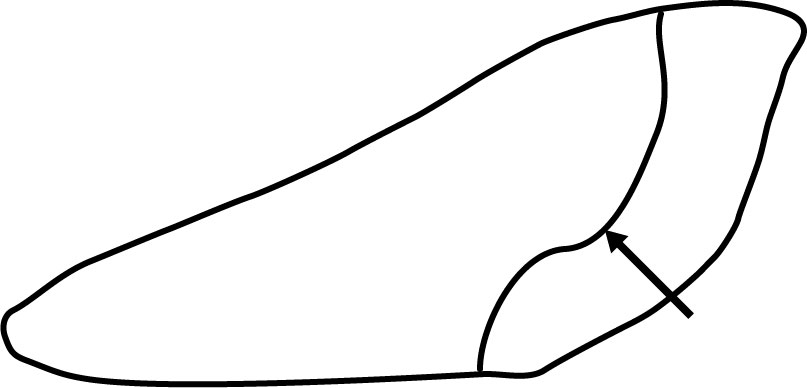 is bent out as a distinctive "finger," and males have a scaleless window (foveaFovea:
is bent out as a distinctive "finger," and males have a scaleless window (foveaFovea:
A scale-less transparent spot on the forewing, often surrounded by distorted veins.
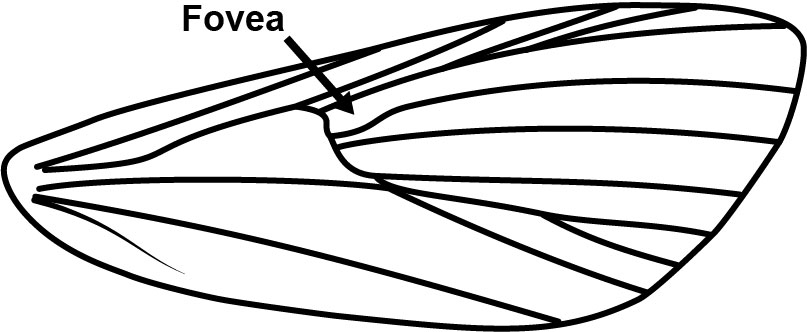 ) on the forewing. If the scales are worn, the common stalk of forewing veins M3 and CuA1 distinguishes this species. In addition, the labial palpi are upturned, and the female wings have two frenular bristlesFrenular bristles:
) on the forewing. If the scales are worn, the common stalk of forewing veins M3 and CuA1 distinguishes this species. In addition, the labial palpi are upturned, and the female wings have two frenular bristlesFrenular bristles:
See frenulum.
-800px.jpg) . Male genitalia have oval valvae with three hooked projections near the valvaValva:
. Male genitalia have oval valvae with three hooked projections near the valvaValva:
One of the pair of large lateral appendages of the male genitalia (pl. valvae).
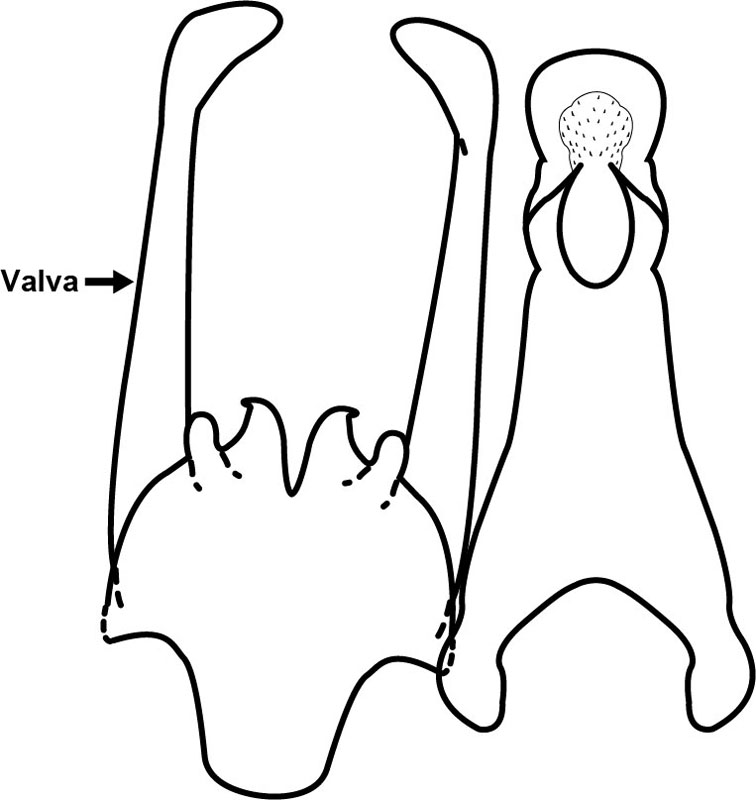 base (two fibulae and a projection from the sacculusSacculus:
base (two fibulae and a projection from the sacculusSacculus:
The ventro-basal area of the valva.
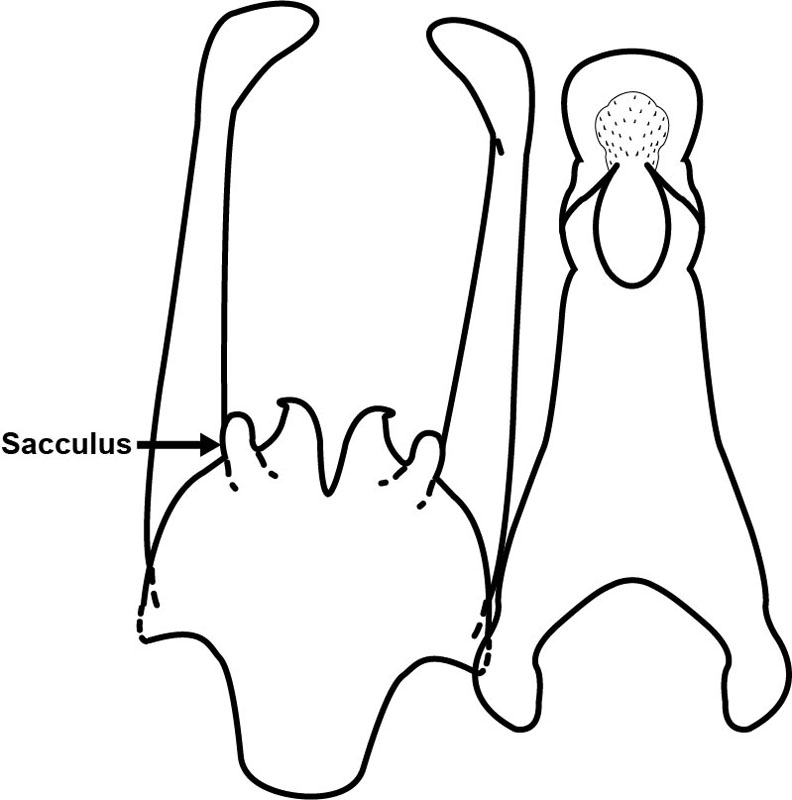 ). Females have a short ductus and corpus bursaeCorpus bursae:
). Females have a short ductus and corpus bursaeCorpus bursae:
The enlarged, bulbous anterior end of the female genitalia.
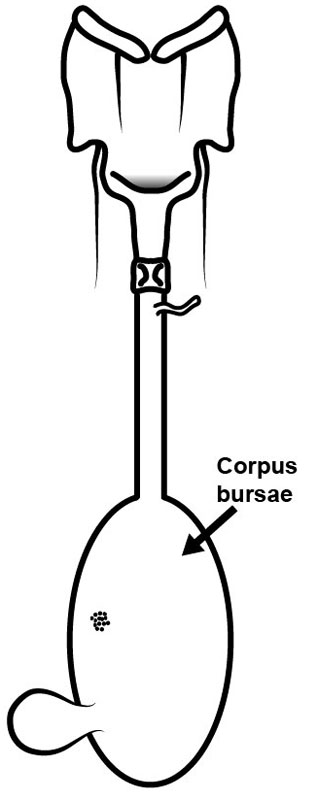 with the ductus seminalisDuctus seminalis:
with the ductus seminalisDuctus seminalis:
A tube connecting the ductus bursae with the oviduct.
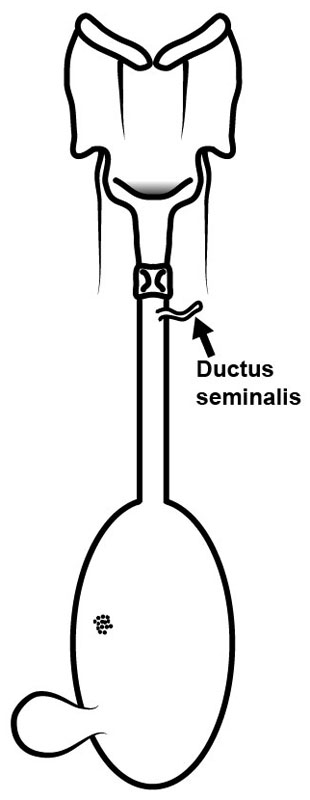 arising directly from the latter.
arising directly from the latter.
Immature stages
The pinacula are distinct and strongly colored brown. The T1 L group has two setae. The features that distinguish it from the other crambid larvae treated herein are (1) the presence of three setae in the subventral group of the first abdominal segment and (2) the D2 (posterior dorsal) pinacula on A8 are fused. In addition, the hairlike condition of the SD2 setaSeta:
A larval hair (pl. setae).
on T2 and T3 is uncommon among other Spilomelinae.
Similar species
Duponchelia does not belong to the Leucinodes group, the members of which differ in the shape of the palps, wing patterns, and non-oval valvae of the male genitalia. Two species of Penestola Möschler occur in littoral swamps of coastal Florida. Males of P. bufalis (Guenée) also have a forewing foveaFovea:
A scale-less transparent spot on the forewing, often surrounded by distorted veins.
 , whereas P. simplicialis (Barnes & McDunnough) do not. Both are grayish brown without white lines, forewing M3 and CuA1 are separate, and the genitalia differ in the shape of the male fibulae and female antrumAntrum:
, whereas P. simplicialis (Barnes & McDunnough) do not. Both are grayish brown without white lines, forewing M3 and CuA1 are separate, and the genitalia differ in the shape of the male fibulae and female antrumAntrum:
Posterior section of the ductus bursae, posterior of the colliculum.
 . They are often attracted to traps for Tephritidae (fruit flies).
. They are often attracted to traps for Tephritidae (fruit flies).
Behavior
Eggs are laid on any part of the plant, but the undersides of leaves are preferred. Eggs are laid in clusters of 3 to 10 and hatch in 8 to 10 days. Larvae prefer moist or wet conditions. They spin webs on the soil surface under leaves, and they can tunnel between the soil and inner surface of containers. Larvae chew holes in leaves, succulent stems, and most aerial plant parts. Larvae can take 7 to 8 weeks to develop, but as little as 3 to 4 weeks has been reported. They do not diapause or tolerate cold conditions, so they are limited to glasshouses in their northern distribution. Larvae are attracted to moist, swampy conditions, such as near irrigation and in shaded places; they can tolerate submersion in water for some time.
Pupation lasts 1 to 2 weeks, and the soil-encrusted cocoon is built on the ground or side of the container. Adults fly low among plants and can be flushed during the day. Adults hold the abdomen erect much like members of the Leucinodes group.
Distribution
Native to Southern Europe, the Middle East, and Africa, the species has become more broadly distributed in Northern Europe and North America through the nursery trade, often in greenhouses. In Florida, it has been detected with cultivated plants in several counties, but there is no evidence of its establishment in the environment. In the southern US, has also been detected in AL, GA, MS, and TX, as well as in nurseries in other states.
Hosts
Polyphagous and saprophagous. Larvae feed on the vegetative parts of a wide variety of hosts, and they also feed on organic matter such as moist rotting leaves and potting soil. Among solanaceous crops, pepper (Capsicum annuum L). is the most frequently reported host. Adults have also been captured among cultivated tomatoes.
Comments
Although Duponchelia fovealis is polyphagous, some of its most frequent associations are with Solanaceae, in particular peppers and tomatoes. Damage to the fruits is not reported. The larvae are probably capable of feeding on any part of the plant and the associated growing medium.
Literature
Ahern 2010Ahern 2010:
Ahern, R. 2010. Amended NPAG Report: Duponchelia fovealis Zeller, Lepidoptera/Pyralidae. New Pest Advisory Group (NPAG), Plant Epidemiology and Risk Analysis Laboratory, USDA APHIS PPQ CPHST. 1-7. http://entnemdept.ufl.edu/pestalert/Duponchelia_fovealis_NPAG_ET_Report_20100917.pdf
Billen 1994Billen 1994:
Billen W. 1994. Uuml;ber das Schadauftreten von Duponchelia fovealis (Zeller, 1847) in Deutschland (Lepidoptera, Pyralidae). Nota Lepidopterologica 16: 212.
Brambila and Passoa 2010Brambila and Passoa 2010:
Brambila J and Passoa S. 2010. Duponchelia fovealis (Zeller) European pepper moth field screening aid. USDA APHIS PPQ CAPS. http://entnemdept.ufl.edu/pestalert/duponchelia_fovealis_screening_aid.pdf
Heppner and Brambila 2010Heppner and Brambila 2010:
Heppner JB and Brambila J. 2010. Florida Lepidoptera Notes, 9. Duponchelia fovealis in Florida (Lepidoptera: Pyralidae: Pyraustinae). Lepidoptera Novae 3: 237‐241.
Trematerra 1990Trematerra 1990:
Trematerra P. 1990. Aspetti morfologici di Duponchelia fovealis (Zeller). Redia. Giornale di Entomologia. Stazione di Entomologia Agraria in Firenze 73: 41-51.
Photo credits
Figs. 8 & 9: © Lyle Buss, University of Florida, Entomology and Nematology Department

